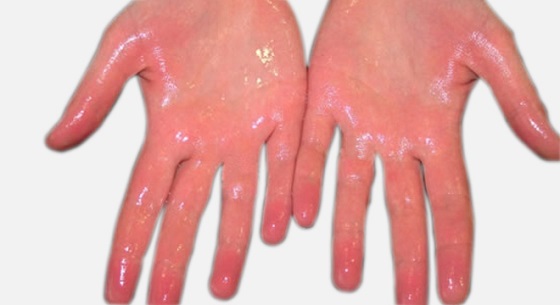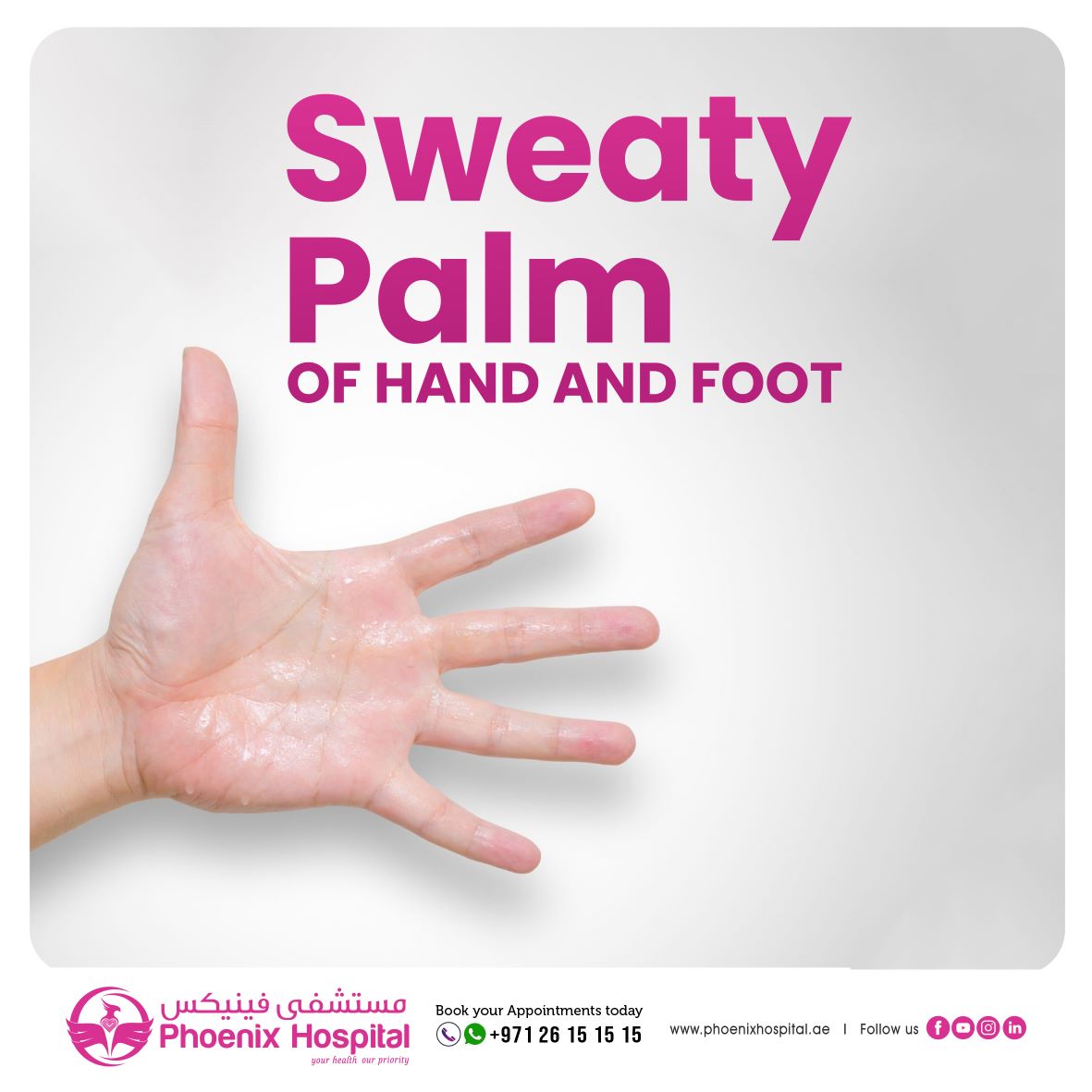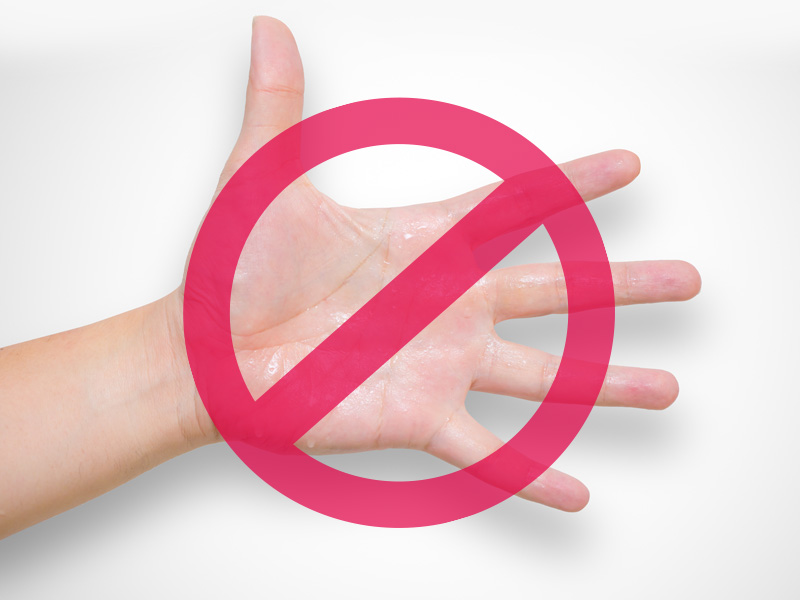Understanding Excessive Sweating: Dermatology Insights on How to Stop Sweaty Hands
Understanding Excessive Sweating: Dermatology Insights on How to Stop Sweaty Hands
Blog Article
Introducing the Intricacies of Excessive Sweating: A Comprehensive Guide to Diagnosis and Monitoring
Extreme sweating, medically known as hyperhidrosis, is a problem that influences a considerable number of people and can have an extensive influence on their top quality of life. While sweating is a natural bodily function, its overactivity in hyperhidrosis presents an unique collection of difficulties that commonly go past simple discomfort.

Comprehending Hyperhidrosis Causes
Hyperhidrosis triggers can be credited to different elements such as genetics, hormone discrepancies, and specific medical problems. Genes play a considerable role in primary focal hyperhidrosis, where people acquire the condition from their family participants. This type of hyperhidrosis typically manifests in specific areas like the hands, soles of the feet, underarms, and face. Hormonal inequalities, specifically an overactive thyroid gland or menopausal changes, can additionally activate excessive sweating. In addition, specific medical problems such as diabetic issues, cardiovascular disease, and infections can bring about additional generalised hyperhidrosis. These underlying health and wellness issues can interfere with the body's natural air conditioning system, triggering the gland to end up being overactive. Comprehending the source of hyperhidrosis is important in diagnosing and successfully managing this problem. By identifying the details elements adding to excessive sweating, doctor can customize treatment strategies to attend to the underlying cause, supplying relief and enhancing the lifestyle for individuals influenced by hyperhidrosis.
Acknowledging Hyperhidrosis Effects

Moreover, hyperhidrosis symptoms might materialize in emotional and social distress, as individuals might really feel ashamed or anxious concerning their sweating, causing avoidance of social scenarios (Treatment for hyperhydrosis of hands and feet). In addition, repeated episodes of excessive sweating can lead to skin maceration, fungal infections, and an overall decline in self-confidence
Diagnostic Process for Hyperhidrosis
Launching the diagnostic procedure for extreme sweating entails detailed examination of the individual's case history and checkup. Asking about the onset, period, and sets off of sweating episodes is critical to separate in between primary focal hyperhidrosis and second generalized hyperhidrosis. Case history ought to additionally include inquiries about medicines, clinical conditions, and household background of hyperhidrosis.
During the health examination, particular interest is paid to the locations affected by sweating. The health care provider may analyze the degree of sweating, look for indicators of underlying conditions, and assess the influence of sweating on the individual's high quality of life. Furthermore, particular tests like the gravimetric test, starch-iodine test, or skin conductance dimensions might be conducted to quantify the amount of sweat created.
Moreover, in instances where secondary hyperhidrosis is suspected, additional examinations such as blood tests, urine examinations, and imaging research studies might be advised to recognize the underlying reason of too much sweating. The analysis procedure aims to precisely identify the type and source of hyperhidrosis to guide appropriate management approaches.
Therapy Alternatives for Hyperhidrosis
When resolving too much sweating, different treatment options are available to alleviate signs and symptoms and boost the person's lifestyle. The treatment strategy for hyperhidrosis relies on the intensity of symptoms and the patient's feedback to preliminary therapies.
Topical treatments, such as aluminum-based antiperspirants, are often suggested as the first line of protection for handling mild cases of hyperhidrosis. These items work by connecting the sweat ducts, thus lowering the amount of sweat that gets to the skin's surface. For people with a lot more severe signs and symptoms, oral medications like anticholinergics might be prescribed to aid reduce sweating. However, these medicines can have adverse effects and are not ideal for everybody.

Effective Monitoring Approaches
To effectively manage hyperhidrosis, a comprehensive and individualized therapy strategy customized to the individual's particular requirements and reaction to previous therapies is important. This plan might include a mix of restorative methods, including lifestyle alterations, topical therapies, oral medications, botulinum toxin shots, iontophoresis, and in serious situations, surgical treatments like sweat gland removal or sympathectomy. Way of living alterations such as using moisture-wicking clothes, using antiperspirants, and exercising stress-reducing techniques can complement medical interventions. Topical antiperspirants consisting of light weight aluminum chloride are usually the first-line therapy, with stronger solutions offered for resistant instances. Oral medications like anticholinergics might be recommended for generalised hyperhidrosis. Botulinum toxic substance injections are reliable for focal hyperhidrosis, supplying temporary alleviation by blocking the launch of acetylcholine. Iontophoresis, involving using a low electric present to lower sweat gland task, can be helpful for both palmoplantar and axillary hyperhidrosis. Surgical options are commonly reserved for extreme, refractory cases and call for careful factor to consider of benefits and dangers. A multidisciplinary approach including skin doctors, main treatment physicians, and, if needed, surgeons, can enhance the monitoring of hyperhidrosis.
Final Thought
In final thought, hyperhidrosis is a condition characterized by excessive sweating, which can greatly influence a person's high quality of life. With proper medical diagnosis and monitoring methods, individuals suffering from hyperhidrosis can locate alleviation and improve their overall health.
Extreme sites sweating, medically recognized as hyperhidrosis, is a problem that affects a significant number of people and can have a profound impact on their top quality of life. By determining the specific variables contributing to excessive sweating, medical care suppliers can tailor therapy plans to address the underlying reason, providing alleviation and enhancing the quality of life for people affected by hyperhidrosis.
Hyperhidrosis, identified by excessive sweating past what is required for regulating body temperature level, can significantly influence an individual's high this article quality of life. Inquiring concerning the onset, period, and triggers of sweating episodes is critical to distinguish in between primary focal hyperhidrosis and additional generalized hyperhidrosis. Treatment for hyperhydrosis of hands and feet.In conclusion, hyperhidrosis is a problem characterized by extreme sweating, which can substantially affect a person's top quality of life
Report this page